How To Make a Chore Chart That Actually Works
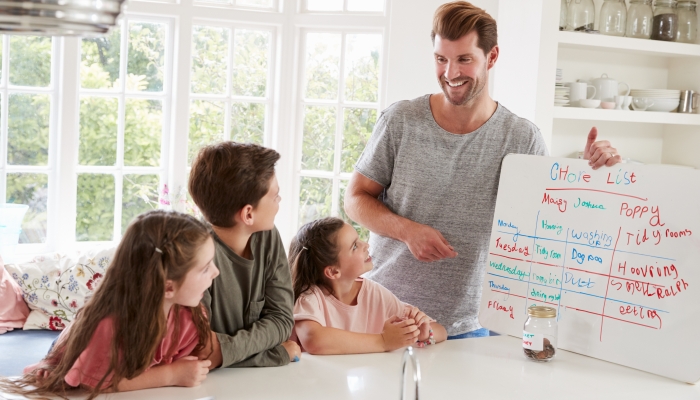
This post may contain affiliate links; please see our terms of use for details.
- A chore chart helps teach kids responsibility and can positively impact their upbringing.
- There are many different ways to make a chore chart, allowing you to pick the best method for your family.
- You can make chores fun by offering different chores weekly to mix things up.
- Incentives are optional with chore charts, so it’s up to the parent to decide if there will be a reward.
Like most parents, I want to teach my children responsibility so they don’t expect me to do everything for them. We all live in the same house, so everyone should chip in, right?
While it takes time to get your kids used to chores and housework, starting with a simple task here and there helps adjust them to helping out around the house.
If you’re wondering how to make a chore chart, you’ve come to the right place. Whether you buy a chore chart online or find a printable chore chart, you’re on your way to teaching your kids about responsibility.
What Is a Chore Chart?
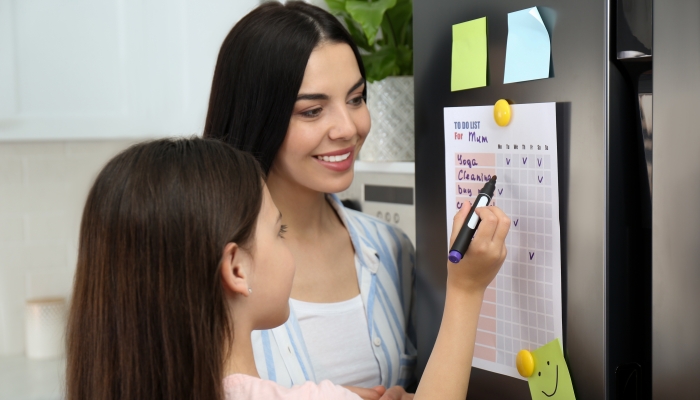
A chore chart lets kids know what chores they must do and when to finish them. Chore charts are especially helpful if your child is a visual learner. When my kids see what they must do each day or week, they are more likely to do it.
Setting expectations is essential with chore charts because you need to understand what your children can do. Here’s a snapshot of what you can expect in each age range:
| Age | Chore Ideas |
| Toddler (2–3 years old) |
|
| Preschooler (4–5 years old) |
|
| Early Elementary (6–8 years old) |
|
| Elementary Aged (9–11 years old) |
|
| Middle School (12–14 years old) |
|
Remember to start slowly, and don’t expect your kids to do all of the above chores. However, you can expect that older kids can handle extra chores over the younger ones. They can also handle a deep cleaning of the house every so often.
How to Make and Organize a Chore Chart
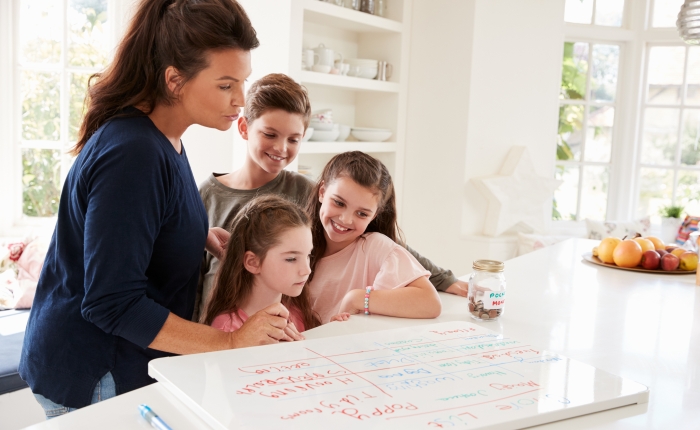
Now that you know what your children can do, it’s time to find the right chore chart for you and your family.
You can find plenty of chore charts on Amazon or use free printable chore charts online. I highly recommend the Queekay Chore Chart for younger kids because you can fill in the chores, and they can slide a button when they complete all the chores.
- What You Are Provided: package contains 4 pieces of kids daily checklists in different colors, namely white, pink, blue and green, also comes with 8 pieces of blank cardstock, rich colors and sufficient quantity to meet your various use needs, and you can also share with your family and friends
- Trustworthy Plastic Material: chart for kids are made of quality plastic material, sturdy, dependable and long lasting, not easy to break or fade, so you can buy and use them with confidence
- Easy to Hang: there is a small hole on the back of each behavior chart for kids, making it easy to hang on a variety of places, with the slider design, so you do not need to use a marker to check and cross, just move the slider can easily mark
- Detachable Design: blank checklist sliders are detachable and also equipped with blank replacement paper, so you can write your to do menu on the paper and DIY your chore list exclusively
For older kids, I recommend the Officyn Dry Erase Chore Chart, because it allows you to fill in the chores, and kids can check them off as they go along. It’s also a great family chore chart because it has four blocks for names and a checklist, ensuring each chore is finished.
- ULTIMATE PLANNING COMBO: 2 spacious 17″x12″ chore charts for daily and weekly planning, paired with a 5″x10″ To-Do List planner making it ultimate planing chore chart set. Perfect for a complete kids chore chart for 2 kids or 4.
- NANOTECH ERASE BRILLIANCE: Officyn’s magnetic chore chart for refrigerator feature Nano-Tech premium erase film instead of the old PET film that ensures writing is effortlessly wiped away, even after extended periods of continuous writing on the kids chore chart. Say farewell to stains and ghosting on our 100% erasable weekly chore chat.
- EFFORTLESSLY VIBRANT & REUSABLE: Officyn’s set, with magnetic marker caps and eraser, now boasts an upgraded design to attach securely to the refrigerator and for effortless updates to your family chore list. Enjoy the convenience of reusability of the Nano-Tech film with vibrant colors to make changes quick and easy to your chore board for family.
- BEST VALUE FOR MONEY: Set including daily chore chart, weekly chore chart, a daily chore list, and large bonus magnetic eraser and 6 vibrant colored dry erase markers with erasers on caps. Designed to cover all planning needs, it’s perfect routine chart for kids, chore chart for teens and chore chart for adults.
Here are a few tips for making and organizing chore charts:
- Remember to choose age-appropriate chores.
- Separate chores by daily, weekly, and monthly.
- Organize the chore chart by rooms in the house.
- Set incentives (it doesn’t have to be money!) for those who complete the weekly checklist of chores.
Benefits of Using a Chore Chart
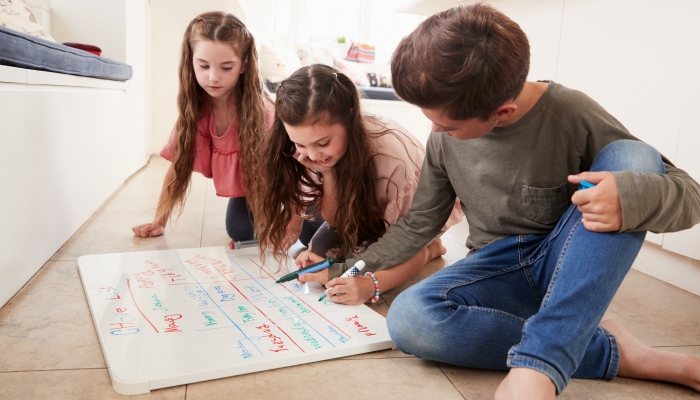
Using a chore chart is a great way to get the whole family involved in keeping the house organized and puts some responsibilities on the kids, not just the parents. Chore charts are also great for developing self help skills, which leads to independence.
Here are some additional benefits of using a chore chart:
- Helps kids accept responsibility in the family
- Develops time management skills
- Instills important life lessons
- Gives kids a sense of satisfaction in completing housework
- Provides a visual of daily tasks
- Gets the family to work together each week
A 2011 study by White et al. published in the Journal of Developmental and Behavioral Pediatrics found performing chores in early elementary school11. White, E. M., DeBoer, M. D., & Scharf, R. J.. Associations Between Household Chores and Childhood Self-Competency. Journal of developmental and behavioral pediatrics : JDBP. 2019;40(3), 176–182. https://doi.org/10.1097/DBP.0000000000000637 was associated with the later development of self-competence, prosocial behavior, and self-efficacy.
At What Age Can I Start Using a Chore Chart With My Child?
Deciding when you start a chore chart with your child is entirely up to you; however, choosing appropriate chores is essential. In addition, when first starting a chore system, remember it will take time for your child to understand they must do their own chores.
The American Academy of Child & Adolescent Psychiatry suggests there are benefits to including chores in a child’s routine22. Chores and Children. The American Academy of Child and Adolescent Psychiatry. 2018. https://www.aacap.org/AACAP/Families_and_Youth/Facts_for_Families/FFF-Guide/Chores_and_Children-125.aspx as early as 3 years old.
For example, you can let your toddler help restock diapers, which will help make chores fun for little ones. It doesn’t matter when you start using a chore chart as long as the chores are age-appropriate.
What Should Be Included in a Chore Chart?
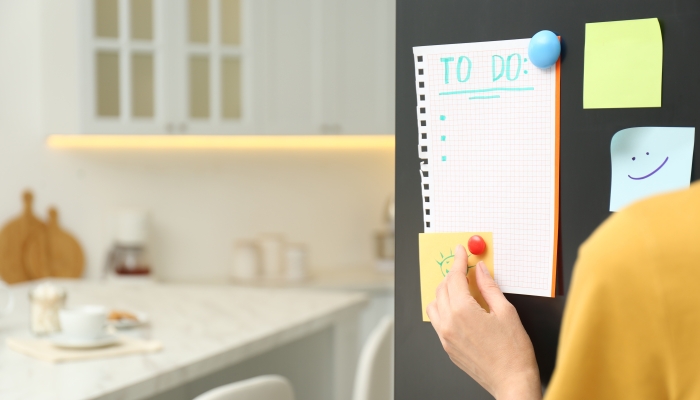
Different parenting styles will likely dictate the way your chore chart looks. However, there are general ideas to remember when creating a family chore chart, so I hope you find these tips helpful.
Here’s a look at what most chore charts should include:
- Weekly schedule
- What chores must be done every day
- Specific chores for each child
- The reward system, including money amount (if any)
- What chores are communal, and which are individual
- Checklist kids can check off each day
Remember, you may tweak your chore chart each week as you find what works best for your family.
Homemade Chore Chart Ideas
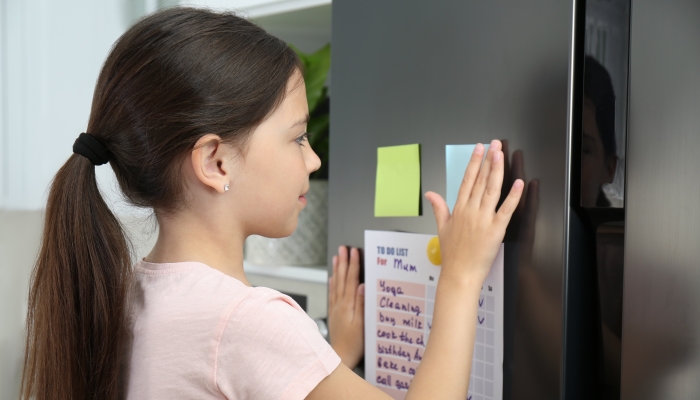
Chore Sticks
If You are a DIYer, you can make chore sticks, which makes it like a fun game for your family. All you have to do is write down various chores on popsicle sticks and have your child choose one randomly. This works great with little ones still getting used to helping with household tasks.
Use a Cookie Sheet For Chores
One of my favorite chore chart ideas is to use a cookie sheet and use magnets to list the chores. It’s a fun way to display what your kiddos have to do. You can also have your child paint the cookie sheet and write their name.
Set Up a Dry Erase Board
A simple way to create a chore chart is to use a dry-erase board and put a checkmark next to each chore as they are completed. As a mom of three, I always look for ideas to make my life easier, so I appreciate using a dry-erase board as a chore chart for my kids.
It allows you to complete daily tasks; at the end of the day, you can erase it and start over. You can also keep the chores up for the week and switch them out for the next.
Free Printable Chore Charts
The internet is full of free printable chore charts, making it a breeze to set one up for your children. Free printables also allow you to find the one that works best for your family.
Depending on the age range of your children, you can customize your search to find the appropriate tasks you want your kids to do each day. In addition, you can post the printable chore chart on the fridge, allowing for easy visibility.
FAQs
Should I use a reward system or incentives along with a chore chart?
It’s certainly not required, but you can use a reward system to encourage and motivate your child to complete their chores if you want. However, incentives don’t have to equal money—although if that’s your chosen route, that’s your choice.
For example, you can allow extra screen time or a shopping trip to the dollar store if your child completes their weekly chores.
How can I ensure consistency and follow-through with a chore chart without becoming overly strict?
I always try to make household work fun because my kids are more likely to help. For example, I’ll tell each of my children to go pick up six toys that are a specific color, and I’ll make it different for each one. It’s almost like a fun game, but they are getting a task done.
Should I rotate chores or assign them based on individual strengths and interests?
If your child loves doing the dishes, you should let them do the dishes every week. There’s nothing better than finding your kids love doing a specific task; just make sure they don’t get burnt out from it.
What do I do if my child resists or refuses to do their assigned chores?
As a mom, it’s my job to offer tough love sometimes, including chores. If you’re using money or other rewards, remind them they won’t get their incentive if the work isn’t complete. Although, remember to be gentle with your children as they navigate this new stage of life.
References
- White, E. M., DeBoer, M. D., & Scharf, R. J. (2019). Associations Between Household Chores and Childhood Self-Competency. Journal of developmental and behavioral pediatrics : JDBP, 40(3), 176–182. https://doi.org/10.1097/DBP.0000000000000637
- Chores and Children. The American Academy of Child and Adolescent Psychiatry. (2018, June). https://www.aacap.org/AACAP/Families_and_Youth/Facts_for_Families/FFF-Guide/Chores_and_Children-125.aspx
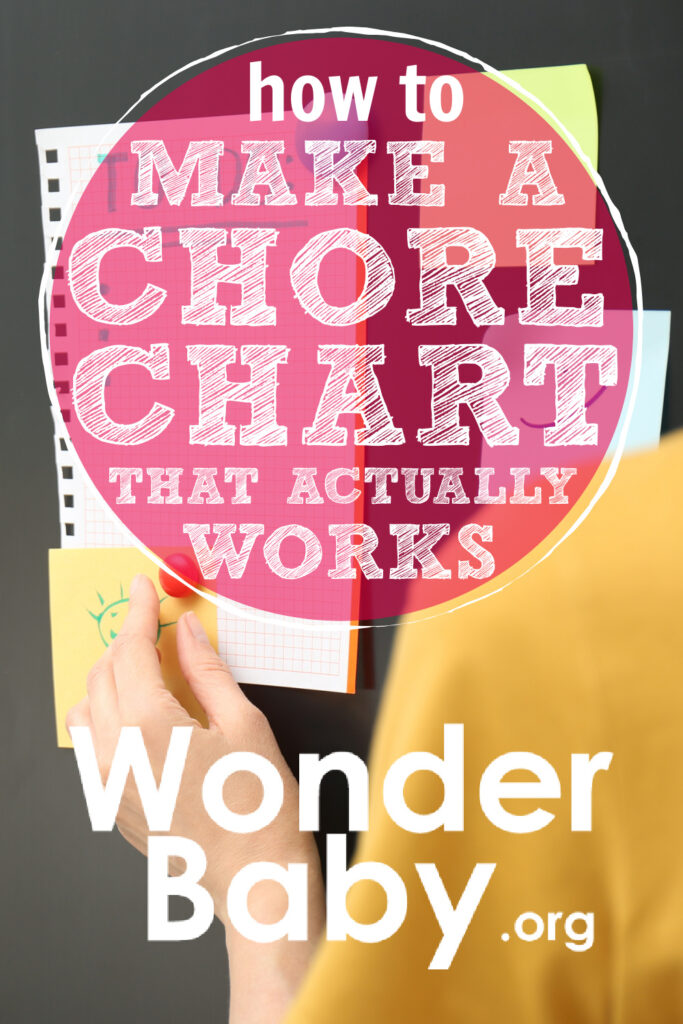
Related Posts
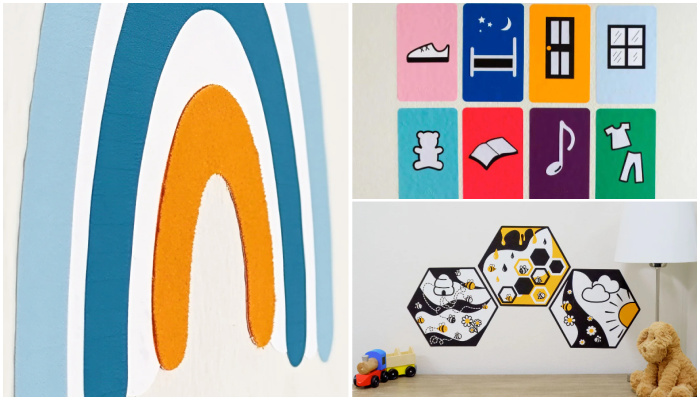
Parenting
Sensory Wall Art: 5 Tips to Create a Room Your Blind or Low-Vision Child Will Love
Even if your child can’t see their surroundings, personalizing and decorating their room with thoughtful, sensory-friendly design can make a big difference in their confidence, independence, and joy.

Parenting
4 Tips to Manage Twins Alone as a Single Parent
Taking care of twins alone as a single parent can feel overwhelming. Learn practical ways to help lighten the load.

Parenting
How to Manage Twin Escalation Syndrome
Discover effective strategies for managing twin escalation syndrome, including promoting individuality and fostering positive interactions.

